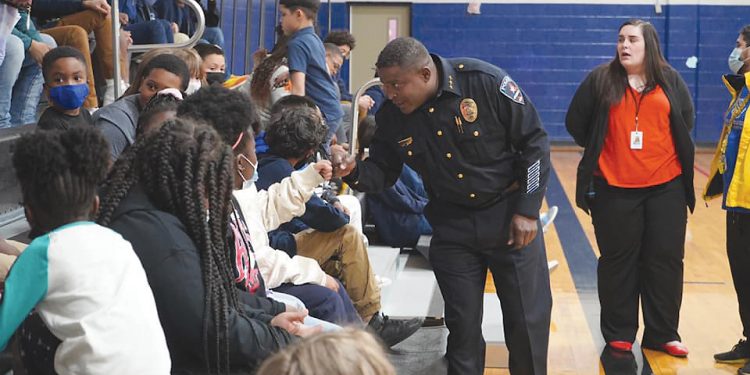What we tend to forget when it comes to law enforcement officers is that they are not robotic algorithms programmed from basements in some nondescript central office. They are flesh and blood, men and women who slip on their pants and shirts and socks and shoes much the way we do. They take showers in homes with pipe problems, jump in cars in need of repair, and wrangle through awful traffic to get where they are going. They fight with their wives and husbands and wonder how is it that their sharp-witted daughter is flunking History.
We don’t necessarily see them as workplace worker bees, not like us, anyway, putting in long shifts and dealing with office politics, coming home to eat and play with the kids despite the fatigue, and returning to do it all over again.
Trying to prove that cops are people, too, wasn’t the aim in April when the Arlington PD held a pair of town halls with community folk; it was to dive deeper than that, Deputy Police Chief Brook Rollins tells me.
“It was to find out what the community and police department wants from us,” he says.
When Rollins says us, he refers to the police department where he has worked for a couple of decades. The town halls weren’t gripe sessions, although at times they resembled such; they were fact-finding missions that would be coupled with internal meetings at the department to see how the 46th largest law enforcement agency in the country with almost 900 sworn officers and professional staff members can work better from the inside out.
In March, Arlington Chief of Police Al Jones announced intentions to implement a Seven Year Strategic Plan that would, as he put it, “help steer the department into the future.”
A pair of community and four employee sessions were set up between March 22 and April 7. While the public might jump at this sort of thing, you can imagine what the APD rank and file thought.
“Let’s face it,” says a smiling Rollins, “most people’s eyes glaze over when you talk about strategic plans.”
Especially one covering seven years.
But by the end of the first session, Rollins, who has seen such plans come and go, was all-in.
“This has been one of the coolest things from a leadership perspective to absolutely take the fuel from the employees and have them tell us where we are going instead of me telling you this is the strategic plan,” Rollins says. “I’m excited we have this opportunity to put forward what people have asked us to.”
It was clear that Chief Jones had put the two groups most intertwined at the front and center of this plan: front-line staffers like patrol cops and the community they come in contact with each hour of each day.
“So from the sessions, we took the comments of the community and the comments from our front-line employees and collated them,” Rollins says.
They sat and read every suggestion to develop a directional theme based on a five-prong framework: communities through partnerships, using technology, managing through relational policing, evidence-based framework, and organizational diversity and succession.
In other words, officers need great working environments like any other worker bee.
“It’s about workplace values,” Rollins says.
Work values often determine what is essential for employees and what they want to achieve in their work. Law enforcement is associated with high engagement and a high risk of burnout. Chief Jones is aware that organizational effectiveness depends on respect for such values.
This is all in the early stages. Chief Jones wants to take a closer, more complex look at the men and women who, in addition to dealing with their life problems, head into work and become part of everyone else’s.
Yet their responses are expected to be kept in check for society’s well-being.
What about their well-being?
Making APD a better place to work means making our city a safer place to be.
















